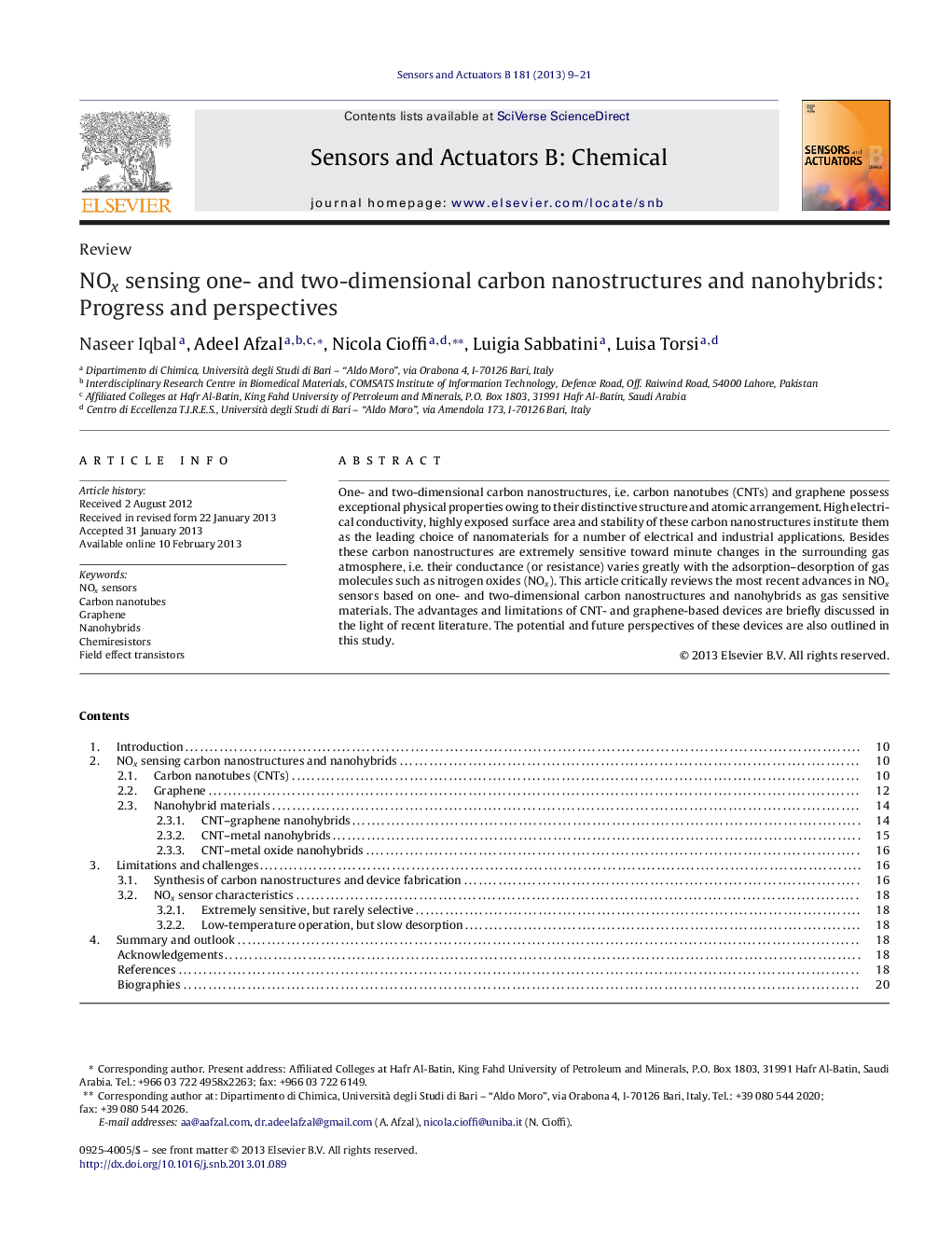| Article ID | Journal | Published Year | Pages | File Type |
|---|---|---|---|---|
| 742104 | Sensors and Actuators B: Chemical | 2013 | 13 Pages |
One- and two-dimensional carbon nanostructures, i.e. carbon nanotubes (CNTs) and graphene possess exceptional physical properties owing to their distinctive structure and atomic arrangement. High electrical conductivity, highly exposed surface area and stability of these carbon nanostructures institute them as the leading choice of nanomaterials for a number of electrical and industrial applications. Besides these carbon nanostructures are extremely sensitive toward minute changes in the surrounding gas atmosphere, i.e. their conductance (or resistance) varies greatly with the adsorption–desorption of gas molecules such as nitrogen oxides (NOx). This article critically reviews the most recent advances in NOx sensors based on one- and two-dimensional carbon nanostructures and nanohybrids as gas sensitive materials. The advantages and limitations of CNT- and graphene-based devices are briefly discussed in the light of recent literature. The potential and future perspectives of these devices are also outlined in this study.
